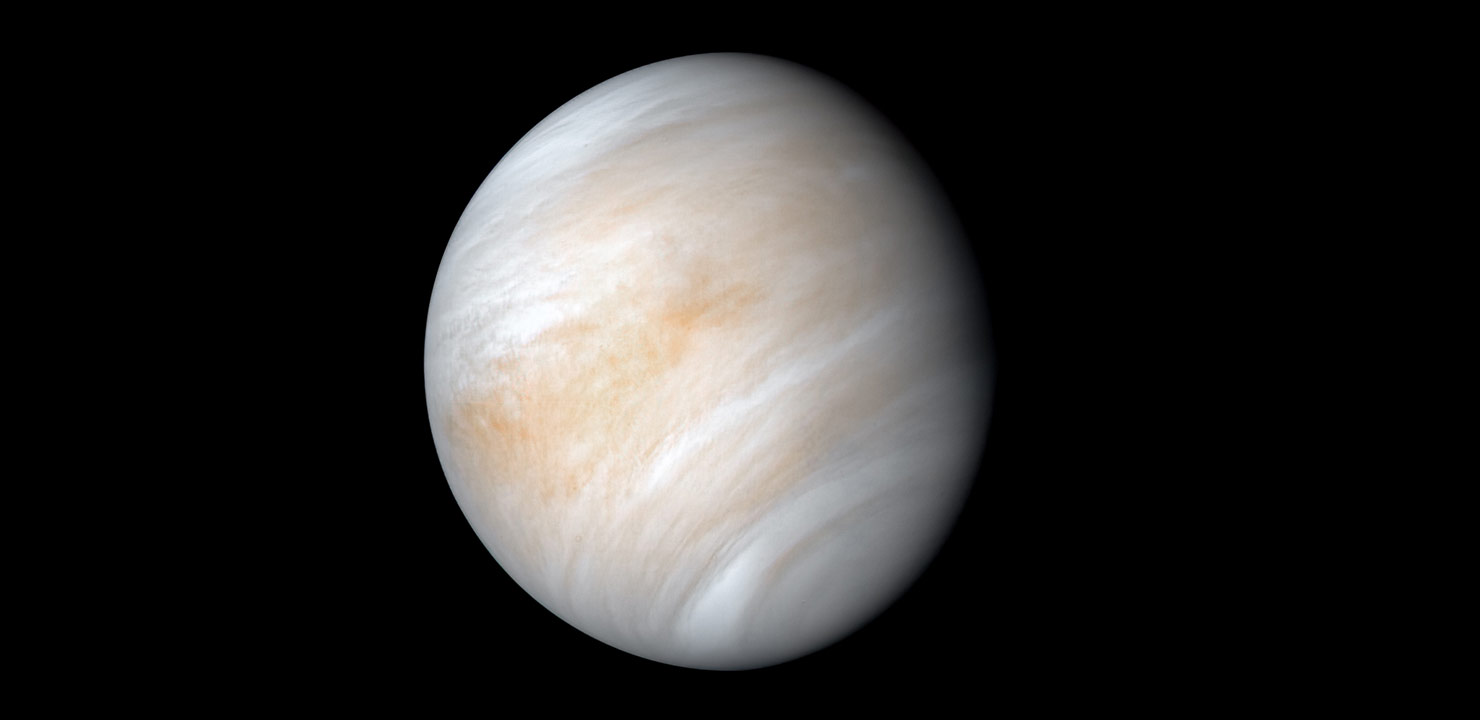
Phosphine in the Atmosphere of Venus
October 2020 :
For pretty much all our lives, one of the major terms to describe our brilliant, beautiful neighbor planet Venus has been. . . Hades. Although the only planet worshiped as a female god, and, for a while believed to be two separate celestial objects, Venus has been an enigma for a very long time. Because of the very thick atmosphere, conjecture ran rampant, especially in Hollywood, with spaceships galore landing there, including the Three Stooges, with all sorts of life forms awaiting.
Until – the atmosphere was determined to be almost exclusively carbon dioxide, giving the venusian surface a constant temperature of 900 degrees Fahrenheit, plus a smidgen of sulfuric acid thrown in, to give the surface that mustardy color seen by Soviet landing craft. Throw in the 90 times denser atmosphere, and Venus was relegated to the “nice to look at from afar” class.
Radar results from the successful Magellan mission in the late ‘80s and early 1990s gave us the perspective of a desolate surface, with no possible way for any kind of life to exist there: Until possibly now, with astronomers announcing the presence of phosphine in Venus’s upper atmosphere. And, what is phosphine? Dictionary definition: a colorless, flammable, very toxic explosive gas, occurring naturally from the breakdown of organic matter.
In 1967, Carl Sagan wrote of the possibility that life might exist in the planet’s clouds, that it actually could have evolved to live in its sulfuric acid layer. This resulted in much conjecture and many papers on the subject, with, in the back of several scientists’ minds, the possibility, though very remote, that a form of life could exist. And, now, although of course the discovery of this gas in our neighbor world doesn’t call for a change in our immediate thinking about our beautiful celestial beacon, but it should call for more thought, and possibly more excursions – but unmanned, of course – there. After all, we are already looking at Venus as the greatest runaway greenhouse example we have; we may as well also think of it as a probable home to some type of mysterious, and possibly new, life forms.
The clouds of Venus
as seen by Mariner 10.
NASA/JPL-Caltech/ Kevin M. Gill



